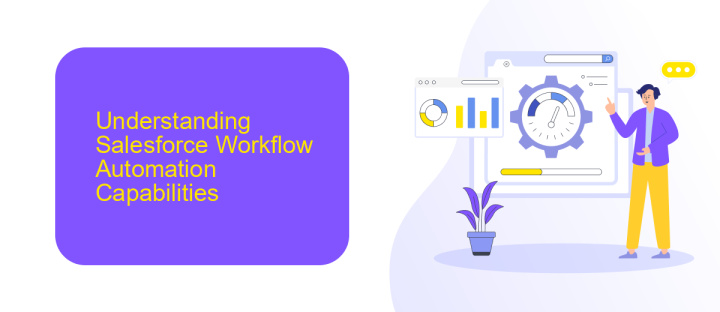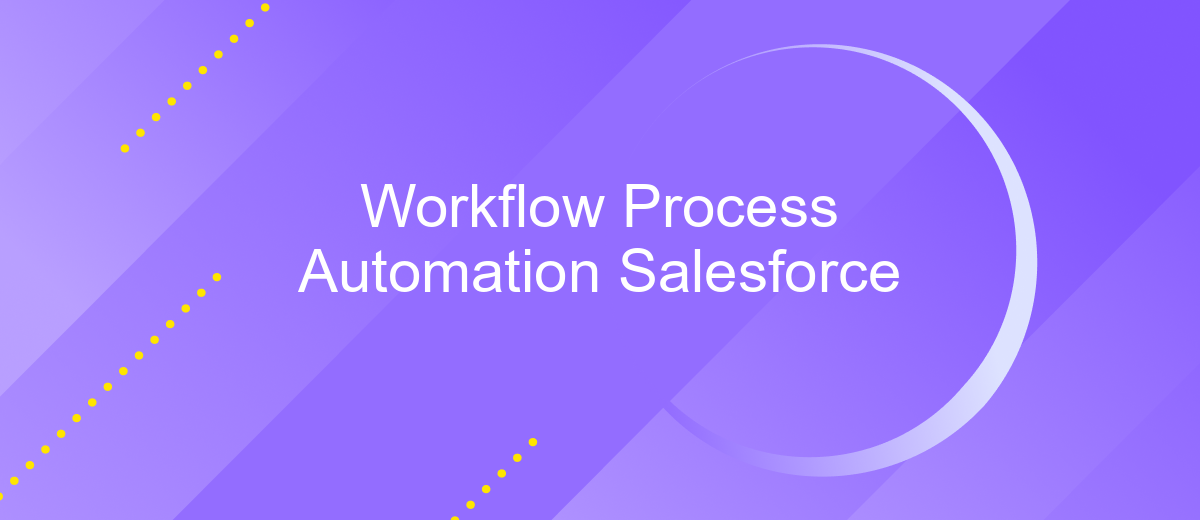Workflow Process Automation Salesforce
In today's fast-paced business environment, efficient workflow process automation is crucial for maintaining competitiveness. Salesforce offers powerful tools to streamline and automate complex business processes, reducing manual effort and enhancing productivity. This article explores how Salesforce's automation capabilities can transform your workflow, enabling your team to focus on strategic tasks and drive business growth.
Introduction: Defining Workflow Process Automation and its Benefits
Workflow Process Automation in Salesforce is a powerful tool designed to streamline and optimize business processes. By automating repetitive tasks, it allows organizations to focus on more strategic activities, enhancing productivity and efficiency. This automation can significantly reduce human error and ensure that critical processes are consistently followed.
- Increased efficiency by automating repetitive tasks
- Reduction in human error
- Consistent execution of business processes
- Improved productivity by freeing up time for strategic activities
Moreover, integrating services like ApiX-Drive can further enhance workflow automation by seamlessly connecting Salesforce with other applications. This integration ensures that data flows smoothly between systems, reducing manual data entry and improving overall data accuracy. By leveraging such tools, businesses can create a more cohesive and efficient operational environment.
Understanding Salesforce Workflow Automation Capabilities

Salesforce Workflow Automation offers a robust set of capabilities designed to streamline business processes and improve operational efficiency. By automating repetitive tasks, organizations can reduce manual effort, minimize errors, and ensure consistency in their workflows. Key features include the ability to create rules-based workflows that trigger actions such as sending emails, updating records, and creating tasks. These workflows can be customized to fit specific business needs, ensuring that each step of a process is executed accurately and timely.
In addition to native automation features, Salesforce Workflow Automation can be enhanced through integrations with third-party services like ApiX-Drive. ApiX-Drive enables seamless connectivity between Salesforce and other applications, allowing for automated data transfers and synchronization. This integration capability ensures that information flows smoothly across different systems, further enhancing the efficiency and effectiveness of automated workflows. By leveraging both Salesforce's built-in tools and external services like ApiX-Drive, businesses can create comprehensive automation solutions that drive productivity and support strategic objectives.
Step-by-Step Guide to Creating and Configuring Workflows

Creating and configuring workflows in Salesforce is a crucial part of automating your business processes. This guide will take you through the essential steps to set up effective workflows that enhance productivity and streamline operations.
- Log in to Salesforce: Navigate to the Salesforce dashboard and log in using your credentials.
- Access Workflow Rules: Go to Setup, then search for "Workflow Rules" under Process Automation.
- Create a New Rule: Click "New Rule" and select the object you want the workflow to apply to, such as Leads or Opportunities.
- Define Rule Criteria: Set the criteria that will trigger the workflow. For example, you can trigger actions when a new lead is created.
- Specify Actions: Choose the actions that will be executed, such as sending an email, updating a field, or creating a task.
- Activate the Workflow: Once all criteria and actions are set, activate the workflow to make it operational.
For more advanced integrations, such as connecting Salesforce with other applications, consider using ApiX-Drive. This service simplifies the integration process, allowing seamless data flow between Salesforce and various third-party apps, enhancing your workflow automation capabilities.
Best Practices for Effective Workflow Automation

Effective workflow automation in Salesforce can significantly enhance productivity and streamline business processes. To achieve the best results, it's essential to follow certain best practices. Start by clearly defining your objectives and understanding the specific needs of your organization. This will help you tailor the automation to meet your goals.
Next, ensure that all stakeholders are involved in the planning and implementation phases. This collaborative approach will help in identifying potential pitfalls and areas for improvement. Additionally, always prioritize data accuracy and consistency to avoid errors and ensure reliable outputs.
- Regularly review and update automation rules.
- Utilize tools like ApiX-Drive for seamless integration with other services.
- Monitor performance and make adjustments as needed.
- Provide adequate training for users to maximize efficiency.
By adhering to these best practices, you can optimize your workflow automation in Salesforce, ensuring it remains efficient and effective. Leveraging integration tools like ApiX-Drive can further enhance your automation capabilities, allowing for a more connected and streamlined business environment.
- Automate the work of an online store or landing
- Empower through integration
- Don't spend money on programmers and integrators
- Save time by automating routine tasks
Case Study: Exploring Real-World Implementations and Success Stories
One of the most compelling examples of Workflow Process Automation in Salesforce is seen in the case of a mid-sized e-commerce company. The company was struggling with manual order processing, which led to frequent errors and delays. By implementing Salesforce's automation tools, they were able to streamline their order management system. Automated workflows were created to handle order entries, inventory checks, and customer notifications, reducing processing time by 50% and virtually eliminating errors.
Another success story involves a healthcare provider that integrated ApiX-Drive with Salesforce to manage patient records and appointment scheduling. Prior to automation, staff spent hours manually updating patient information and coordinating schedules. By using ApiX-Drive, they seamlessly integrated their existing systems with Salesforce, automating data transfers and notifications. This not only improved data accuracy but also allowed healthcare professionals to focus more on patient care, leading to a 30% increase in patient satisfaction scores.
FAQ
What is Workflow Process Automation in Salesforce?
How can I set up a workflow rule in Salesforce?
What are some common use cases for workflow automation in Salesforce?
How can I integrate external applications with Salesforce for workflow automation?
What are the benefits of using workflow process automation in Salesforce?
Routine tasks take a lot of time from employees? Do they burn out, do not have enough working day for the main duties and important things? Do you understand that the only way out of this situation in modern realities is automation? Try Apix-Drive for free and make sure that the online connector in 5 minutes of setting up integration will remove a significant part of the routine from your life and free up time for you and your employees.


